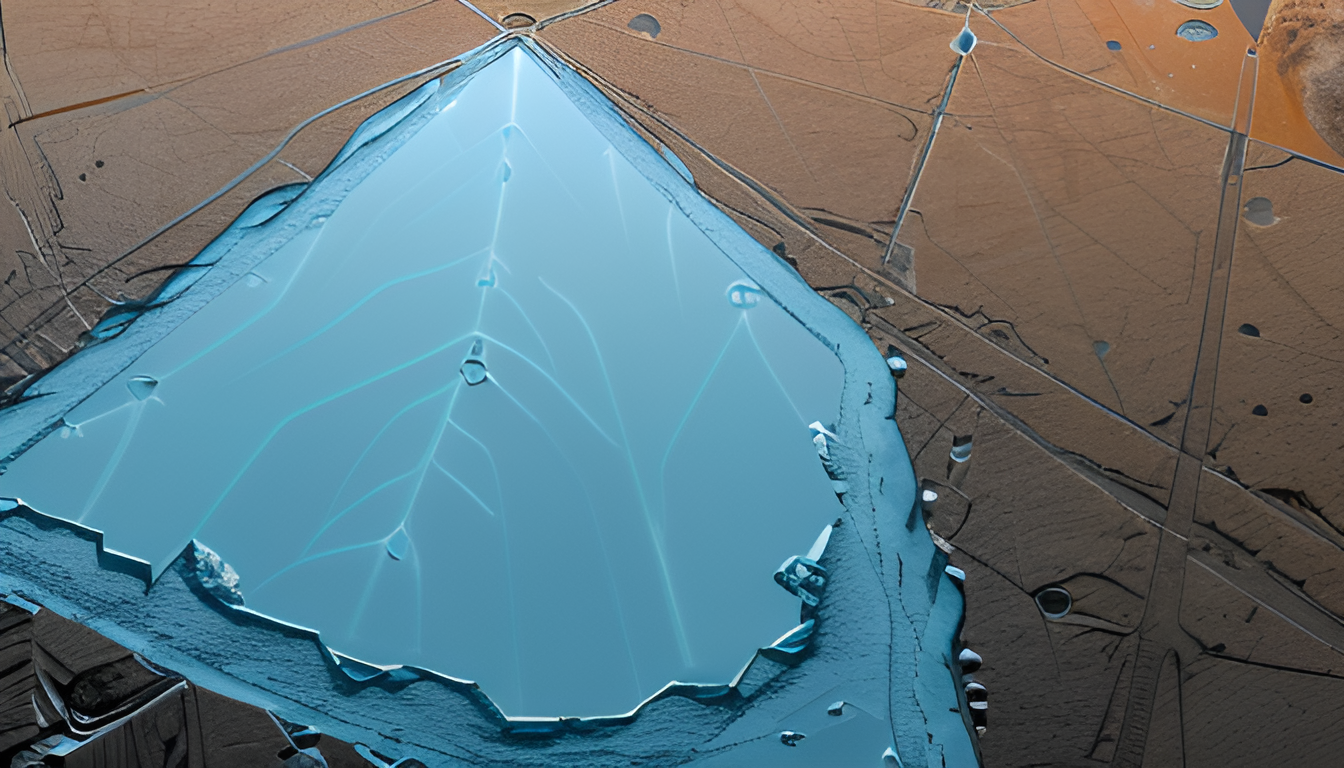NASA’s Europa Clipper Mission to Explore Jupiter’s Moon for Signs of Life

The Europa Clipper mission is not just another space endeavor; it’s a thrilling journey into the unknown! Scheduled for launch in 2024, this mission aims to unlock the mysteries of Europa, one of Jupiter’s most intriguing moons. Why is Europa so special, you ask? Well, beneath its icy crust lies a vast ocean that may harbor conditions suitable for life. Imagine an alien world where life might exist, hidden beneath layers of ice! This mission is set to investigate that very possibility.
Equipped with cutting-edge technology, the Europa Clipper will conduct detailed reconnaissance of Europa’s surface and its subsurface ocean. The spacecraft will perform over 45 flybys of the moon, gathering data that could change our understanding of life beyond Earth. Isn’t it fascinating how a single mission could potentially answer one of humanity’s biggest questions: Are we alone in the universe?
But what exactly does the mission entail? The primary objectives include:
- Mapping the ice shell and characterizing the ocean beneath.
- Analyzing the surface composition to identify organic materials.
- Studying the moon’s geology and potential hydrothermal activity.
With these goals in mind, the Europa Clipper mission is not just a scientific expedition; it’s a beacon of hope for astrobiologists and space enthusiasts alike. As we prepare for this groundbreaking exploration, the excitement builds. Will we find signs of life? Only time will tell, but one thing is for sure: the journey to Europa is going to be nothing short of extraordinary!
Overview of the Europa Clipper Mission
The Europa Clipper mission is a groundbreaking endeavor by NASA aimed at unraveling the mysteries of Jupiter’s moon, Europa. Launched in the mid-2020s, this mission is set to embark on a journey that will span several years, culminating in a series of flybys of Europa. Why Europa, you ask? Well, this icy moon is believed to harbor a vast subsurface ocean beneath its frozen crust, making it one of the most promising places in our solar system to search for extraterrestrial life.
Equipped with cutting-edge technology, the Europa Clipper will conduct meticulous reconnaissance of Europa’s ice-covered surface and the ocean beneath. This mission’s objectives are not just ambitious; they are crucial for understanding the potential habitability of other celestial bodies. The spacecraft will gather data on the moon’s ice shell thickness, surface composition, and the dynamics of its subsurface ocean. By piecing together this information, scientists hope to answer the pivotal question: Does life exist beyond Earth?
To achieve these goals, the mission employs a suite of advanced scientific instruments, each designed to perform specific tasks. For example, the Ice-Penetrating Radar will help determine the thickness of the ice shell, while spectrometers will analyze the chemical composition of the surface. The data collected will not only enhance our understanding of Europa but also inform future missions to other icy worlds.
In essence, the Europa Clipper mission is not just about exploring a distant moon; it represents humanity’s quest to understand our place in the universe. As we prepare for this incredible journey, we can’t help but wonder: What secrets does Europa hold, and could it be a new home for life?
Scientific Instruments on Board
The Europa Clipper mission is not just another space endeavor; it’s a treasure chest of advanced scientific instruments that will help unlock the secrets of Jupiter’s icy moon, Europa. Imagine peering beneath a thick layer of ice to uncover the mysteries of a vast ocean, teeming with possibilities for life. This mission is equipped with a variety of tools, each specifically designed to gather crucial data about Europa’s surface and subsurface environments.
Among the key instruments on board, we find the Ice-penetrating Radar, which will be pivotal in mapping the thickness of Europa’s ice shell. This radar can provide insights into the ocean’s depth and the potential for hydrothermal activity beneath the surface. Coupled with this, the Near-Infrared Spectrograph will analyze the composition of the moon’s surface materials, searching for organic compounds and other essential ingredients for life.
Additionally, the Magnetometer will measure the magnetic field around Europa, helping scientists infer the presence and salinity of the subsurface ocean. This data is crucial because it can indicate whether conditions are right for life to exist. To help visualize the findings, the High-Resolution Camera will capture stunning images of the moon’s surface, revealing geological features that tell the story of its dynamic history.
| Instrument | Purpose |
|---|---|
| Ice-penetrating Radar | Maps the ice thickness and assesses ocean depth |
| Near-Infrared Spectrograph | Analyzes surface composition for organic materials |
| Magnetometer | Measures magnetic fields to infer ocean salinity |
| High-Resolution Camera | Captures detailed images of Europa’s surface |
In summary, the scientific instruments aboard the Europa Clipper are not just tools; they are the keys to understanding whether Europa could potentially harbor life. The data collected will not only shed light on this enigmatic moon but also fuel our curiosity about what lies beyond our own planet. With each instrument playing its role, we stand on the brink of a new chapter in the search for extraterrestrial life.

Significance of Europa’s Ocean
The ocean beneath Europa’s icy crust is not just any body of water; it’s a potential cradle for life. Scientists believe that this subsurface ocean, which is estimated to contain more than twice the amount of water found on Earth, could harbor the essential ingredients for life. Imagine a vast, dark ocean, shielded from the harshness of space, where the right conditions might allow organisms to thrive. Isn’t that a thrilling thought?
Europa’s ocean is believed to be in contact with the moon’s rocky mantle, creating a unique environment where chemical reactions could occur, similar to those that support life in Earth’s deep oceans. This interaction could lead to a rich chemistry that may be crucial for life. The significance of this ocean extends beyond mere speculation; it prompts us to ask critical questions about the nature of life itself. What if life doesn’t need sunlight? What if it can exist in the dark, icy depths of a distant moon?
Furthermore, the exploration of Europa’s ocean could reshape our understanding of habitability. The presence of liquid water is often considered a key indicator of a moon or planet’s ability to support life. To illustrate:
| Key Factors for Habitability | Europa | Earth |
|---|---|---|
| Liquid Water | Yes | Yes |
| Energy Sources | Possible hydrothermal vents | Solar energy, geothermal vents |
| Organic Compounds | Potentially present | Abundant |
As we dive deeper into the mysteries of Europa, the implications of our findings could extend far beyond our solar system. The prospect of discovering life in such an unexpected place could transform how we view our own existence and the possibilities that lie within the universe. Are we truly alone, or is life more common than we think? The Europa Clipper mission may soon provide some answers.
Future Implications for Astrobiology
The Europa Clipper mission is not just another space exploration endeavor; it’s a potential game-changer for the field of astrobiology. Imagine this: if Europa’s icy surface hides a vast ocean teeming with the right conditions for life, what does that mean for our understanding of life beyond Earth? The implications are staggering and could reshape our perspective on where life can exist in the universe.
As scientists analyze the data collected from the mission, we may uncover evidence that life can thrive in environments previously deemed inhospitable. This could lead to a paradigm shift in how we search for extraterrestrial life. Instead of focusing solely on planets with Earth-like conditions, we might expand our search to include icy moons and other celestial bodies with subsurface oceans.
Furthermore, the findings from Europa could inspire new technologies and methodologies in astrobiology. For instance, if we discover microbial life forms or even complex organisms, it could prompt the development of more sophisticated exploration techniques, such as:
- Advanced robotic probes capable of penetrating thick ice layers
- In-situ analysis tools for immediate assessment of biological materials
- Innovative methods for detecting biosignatures in extreme environments
In essence, the Europa Clipper mission may not only answer the age-old question of whether we are alone in the universe but also ignite a new era of exploration. As we push the boundaries of what we know, the quest for life beyond our planet will become more inclusive, leading to exciting discoveries that could redefine our place in the cosmos.













